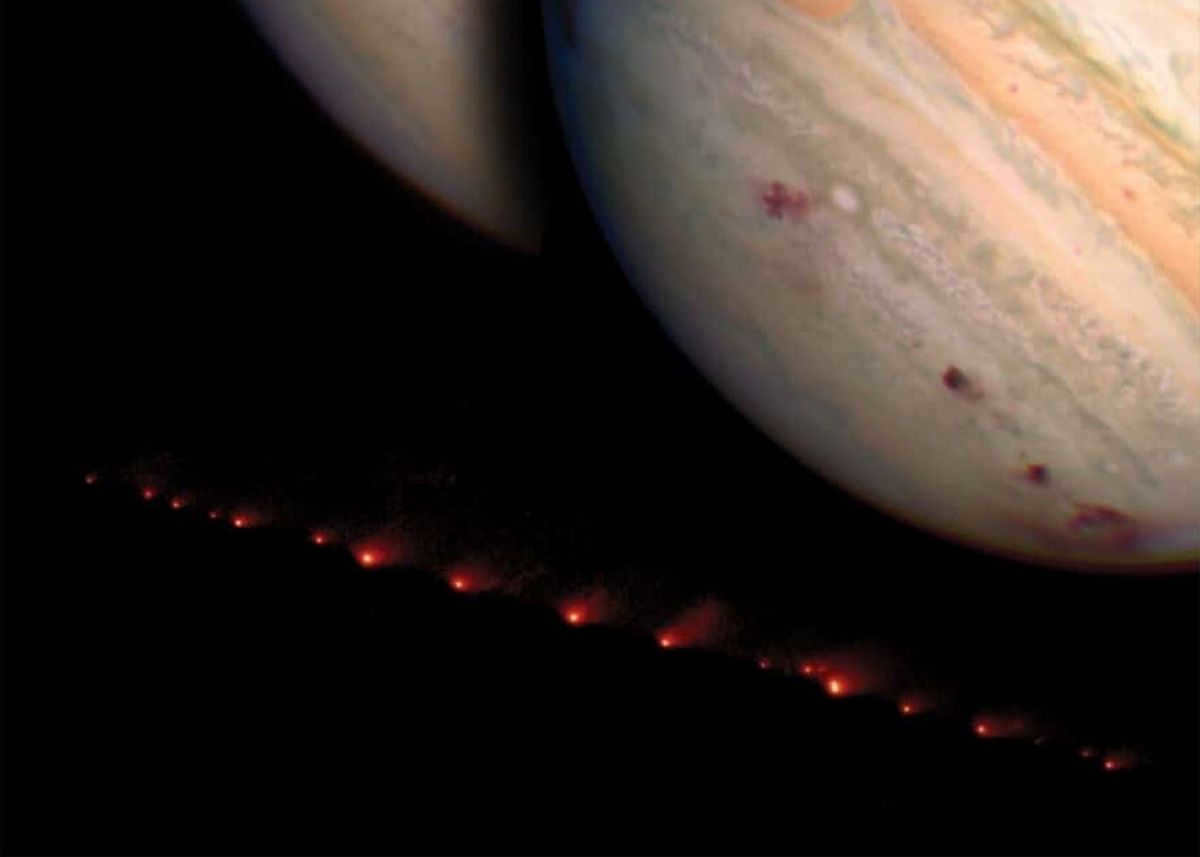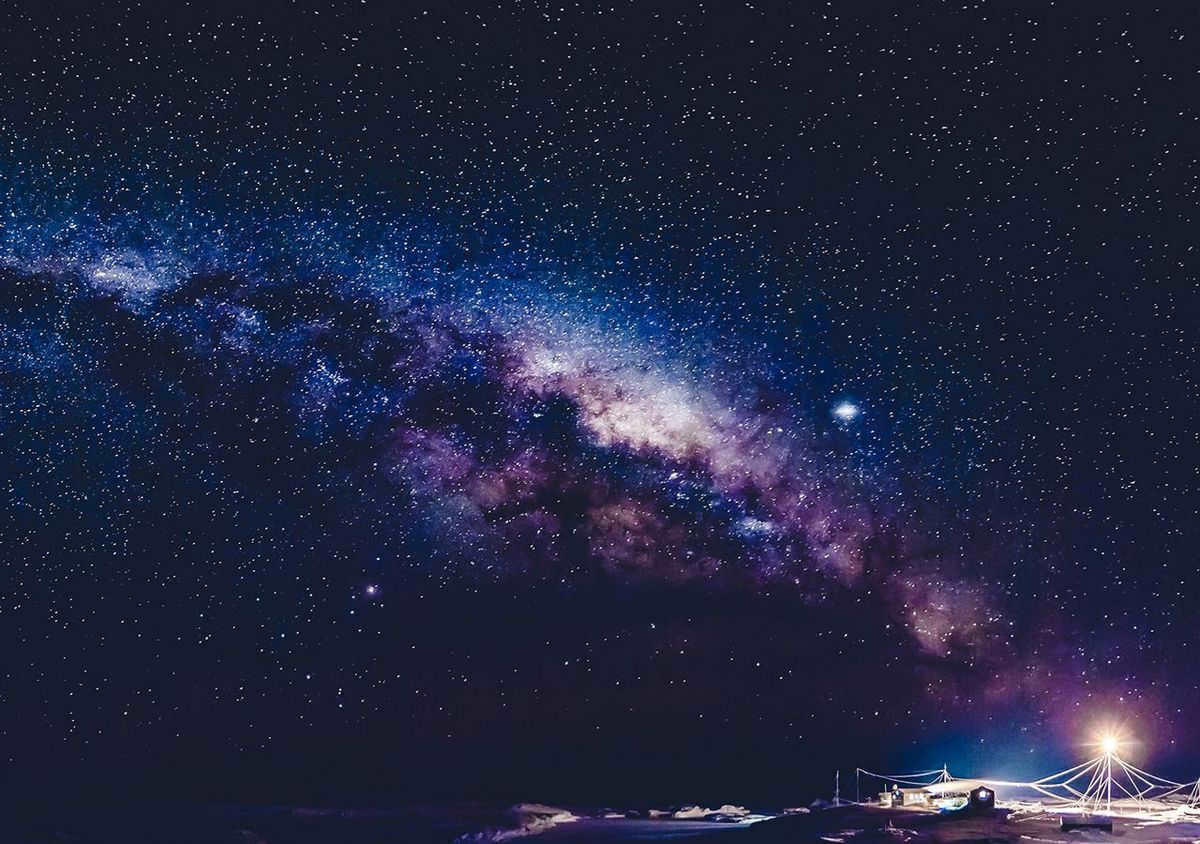
Due to its relatively low mass, Jupiter is incapable of becoming a star, despite its striking similarity to the Sun.
The cosmos is undeniably breathtaking, filled with celestial bodies of incomprehensible proportions. Even with our familiarity with Earth and the multitude of images depicting it, our minds cannot fully grasp the tremendous scale of our planet.
However, there exist objects that surpass our diminutive planet on an exponential scale, many of which are stars. Stars exhibit a wide range of sizes, with the majority being significantly larger than planets.
In comparison to the planets within our solar system, our Sun is more than one hundred times greater in size. When juxtaposed, the Earth appears as a mere speck next to the Sun.
Nevertheless, there exists a member of our solar system that bears a striking resemblance to our beloved and renowned gas giant – Jupiter.
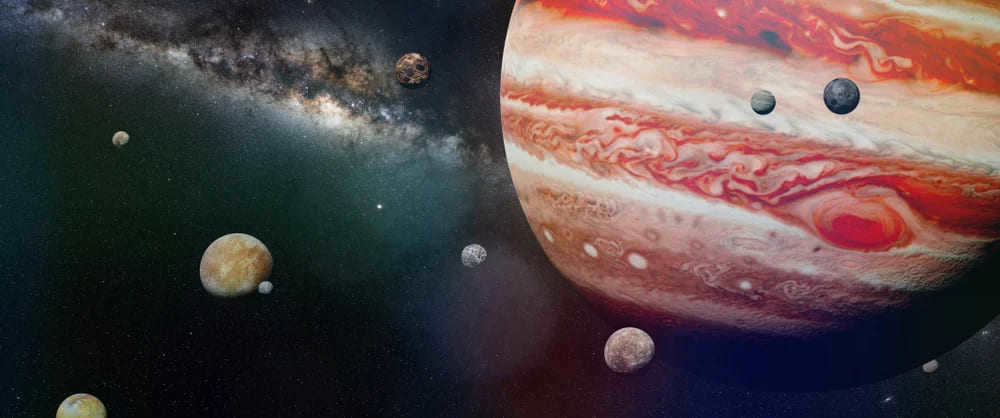
Jupiter shares numerous similarities with the Sun and is significantly larger than the other planets in our solar system. This prompts the query: if Jupiter possesses such resemblance to the Sun, why doesn’t it qualify as a star? Moreover, is there a possibility for Jupiter to transform into a star?
To put it simply, a star can be described as a luminous sphere composed of hot gas. This gas primarily consists of hydrogen and helium, and the forces of gravity hold these gases together.
The star’s luminosity, heat, and energy are generated within its core through the fusion of hydrogen atoms into helium atoms, a phenomenon called nuclear fusion. This fusion reaction releases incredible amounts of energy, which accounts for the star’s intense brightness!
This energy generation process holds great significance for the star and relates directly to the inquiry presented in this article.
What is the process of star formation?
The formation of a star is believed to occur when matter within interstellar clouds, composed of gases and dust, undergoes gravitational collapse.
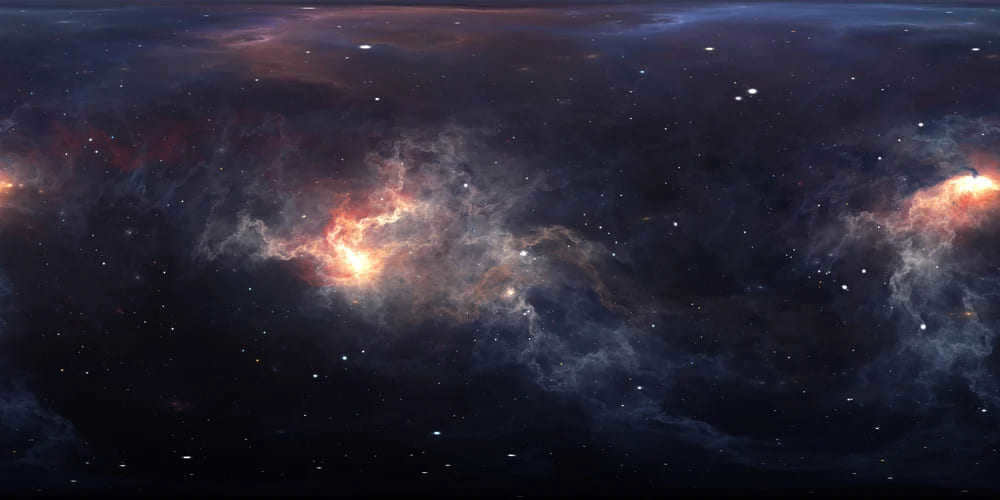
When this event occurs, the substance within the cloud starts to spin at an extremely fast pace. While the substance keeps spinning, it gathers more and more gases and other materials released by the cloud, resulting in the formation of a small nucleus surrounded by a rotating disk of interstellar cloud matter.
The nucleus consists of gases, and once the mass of hydrogen reaches a sufficient level for nuclear fusion, the outer disk is expelled, leaving behind the core that continues to exist as a star.
A planet forms from the material that was originally present in the disk surrounding the star. These tiny particles gradually come together as they orbit the newly created star, eventually reaching a size large enough to become a planet.
How similar are the Sun and Jupiter?
Jupiter is a gas giant, lacking a solid surface like Earth. Similar to the Sun and other stars, it consists mainly of hydrogen and helium gases.
Jupiter is incredibly massive, measuring almost 11 times the size of Earth and 318 times more massive. Not only is it more massive than our own planet, but it surpasses the combined mass of all the planets in our solar system (specifically, it is roughly 2.5 times more massive than all the planets combined).
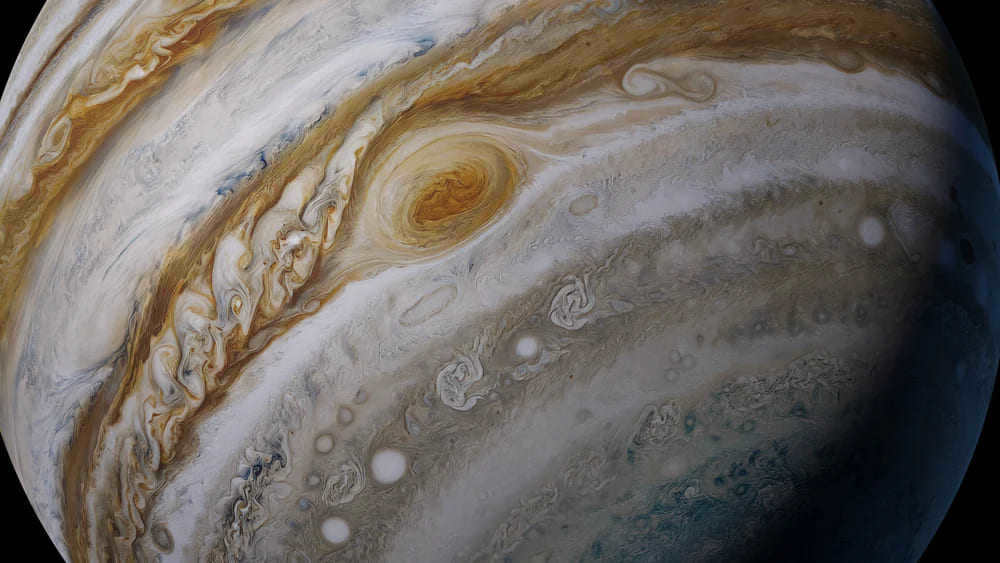
Stars have lower densities compared to planets. The Sun, for example, has a density of 1.41 grams per cubic centimeter, whereas the Earth has a significantly higher density of 5.51 grams per cubic centimeter.
Jupiter, on the other hand, has a density much closer to that of the Sun, with a density of 1.33 grams per cubic centimeter.
Furthermore, even the composition of Jupiter’s atmosphere is similar to that of the Sun. Our Sun is predominantly composed of 71% hydrogen and 27% helium, while Jupiter is composed of 73% hydrogen and 24% helium.
Why isn’t Jupiter a star?
Despite its similarities to the Sun and its significant size (Jupiter is actually larger than some stars in the universe, such as one that is only 600 light-years away and approximately the size of Saturn), there is a crucial factor that prevents Jupiter from becoming a star.
As we mentioned before, the process of energy formation in a star is essential. This is the very reason why Jupiter cannot transform into a star. Due to its insufficient mass, Jupiter lacks the necessary conditions to form a nucleus where a nuclear fusion reaction can initiate. Without this reaction, Jupiter cannot achieve star status.
Therefore, despite its striking resemblance to our Sun in nearly every aspect, Jupiter’s inability to trigger a nuclear fusion reaction in its core prevents it from surpassing the boundary between a planet and a star.
Is it possible for Jupiter to ever become a star?
Is it possible naturally? It seems unlikely. Jupiter cannot magically gain additional mass. Our solar system does not contain any extra interstellar matter for a giant planet to absorb and increase in size.
Even if there were some interstellar matter remaining after the formation of all the planets, it would still not be sufficient. In order to become a brown dwarf (the smallest type of star, bordering between a star and a planet), a planet would need to increase its mass by a factor of 13.
The largest planet in our solar system, Jupiter, is very similar to the Sun and could have potentially become a star if it had accumulated more matter during its formation.
Jupiter could potentially become a star if it could locate 13 more similar planets and form a small, united group.
Speaking seriously, the main idea is that Jupiter is a planet made of gas that has some star-like characteristics. However, because it lacks sufficient mass, it cannot initiate the process of nuclear fusion, which is what distinguishes stars from planets. If Jupiter had at least 13 times its current mass, it would have had the potential to become a star.
Therefore, even though Jupiter may never fulfill its stellar potential, it will always hold a special place in our hearts as a star!
There are claims that Jupiter is an unsuccessful star. But can we trust these rumors, and did Jupiter ever have a real chance of becoming a fully-fledged star?
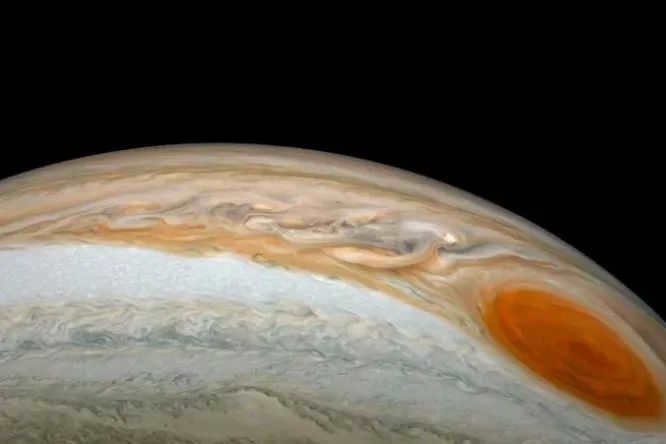
EBLM J0555-57Ab, a red dwarf located 600 light-years away from us, is currently the smallest main-sequence star in the Milky Way galaxy. With a radius of approximately 59,000 kilometers, it is just slightly bigger than Saturn. This makes it the tiniest star known to sustain hydrogen fusion in its core, a crucial process that enables stars to burn until their fuel is depleted.
Within our solar system, there are two celestial bodies that surpass the size of this diminutive star. One of them is the Sun, and the other is Jupiter, which resembles a colossal ice cream sphere with an average radius of 69,911 kilometers.
The answer to this question is quite straightforward: Jupiter lacks the necessary mass to undergo the process of hydrogen fusion and convert it into helium. However, there is an intriguing celestial body known as EBLM J0555-57Ab, which possesses approximately 85 times the mass of Jupiter and yet retains a surprisingly low mass for a star. Should this entity become even slightly less massive, it would forfeit its capacity to engage in hydrogen synthesis.
Jupiter and the Sun share more similarities than one may realize.
Jupiter possesses a mass 2.5 times greater than that of all the other planets combined. However, due to its nature as a gas giant, it has a notably low density of approximately 1.33 grams per cubic centimeter. In contrast, Earth boasts a density of 5.51 grams per cubic centimeter, which is four times higher.
Interestingly, the Sun also exhibits a low density, measuring just 1.41 grams per cubic centimeter. In terms of mass composition, the Sun consists of approximately 71% hydrogen and 27% helium, with minuscule amounts of other elements comprising the remaining portion. Conversely, Jupiter is comprised of roughly 73% hydrogen and 24% helium by mass – an astonishing resemblance, wouldn’t you agree?
Nevertheless, it remains improbable that Jupiter could ever evolve into a star if left to its own accord within the solar system.
Understanding the Birth of Stars and Planets
The formation of stars and planets involves distinct processes. Stars come into existence when a concentrated mass within an interstellar molecular cloud undergoes gravitational collapse. Over time, additional matter accumulates in the stellar accretion disk.
As the mass increases, gravity also increases, causing the young star’s core to become more and more compressed, resulting in a higher temperature. Eventually, the core becomes extremely compressed and hot, leading to the ignition of thermonuclear fusion. Based on our understanding of star formation, when a star finishes accumulating material, there is still some leftover material in the accretion disk. This leftover material is what eventually forms planets. Astronomers suggest that for gas giants such as Jupiter, this process begins with small pieces of icy rock and dust in the disk. As these particles orbit the young star, they start colliding and sticking together due to static electricity. Gradually, these particles grow in size until they reach a mass of about 10 times that of Earth, allowing them to gravitationally attract more gas from the surrounding disk.
Therefore, Jupiter never came close to becoming a star. It shares a similar composition to the Sun, not because it was a “failed star,” but because it originated from the same cloud of molecular gas that gave birth to the Sun.
Actual unsuccessful stars
There exists a distinct category of entities that can be referred to as “unsuccessful stars”. These entities are called brown dwarfs and they occupy the space between gas giants and stars. Beginning at approximately 13 times the mass of Jupiter, these entities possess enough mass to sustain nuclear fusion – not through regular hydrogen, but through deuterium. Deuterium is also known as “heavy” hydrogen; it is a hydrogen isotope with a proton and neutron in the nucleus rather than a single proton. Its melting point and pressure are lower than those of regular hydrogen. Due to occurring at lower mass, temperature, and pressure, deuterium fusion serves as an intermediate stage in the progression towards hydrogen fusion for stars as they continue to accumulate mass. However, some entities never reach that mass; these are what we refer to as brown dwarfs.
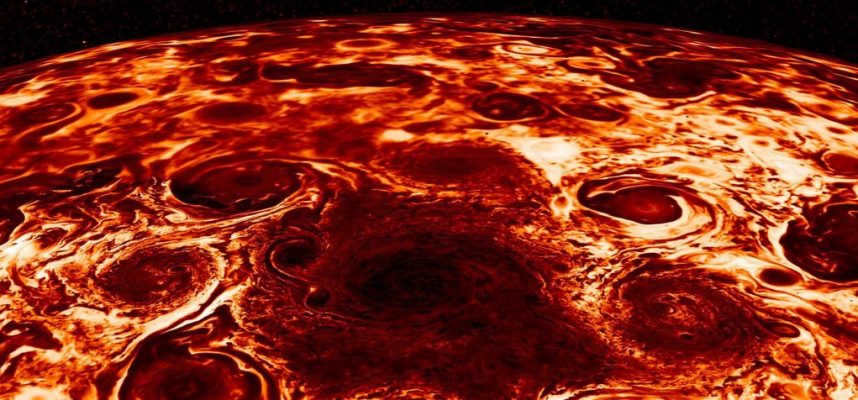
The celestial body depicted in the image above is EBLM J0555-57Ab, a red dwarf located 600 light-years away from our planet. Despite its proximity, this star is relatively small, with an average radius of approximately 59,000 kilometers, just slightly larger than Saturn. Nevertheless, it is significant to note that EBLM J0555-57Ab is the smallest known star capable of sustaining hydrogen fusion in its core, which is the fundamental process responsible for stellar combustion.
In our own solar system, there are two entities that surpass the size of this diminutive star. The first, of course, is the Sun, while the other is Jupiter, a colossal celestial body resembling a gargantuan ice cream sphere, with an average radius measuring 69,911 kilometers.
Why is Jupiter classified as a planet and not a star?
The quick explanation is straightforward: Jupiter lacks the necessary mass to undergo the process of converting hydrogen into helium. With a mass approximately 85 times that of Jupiter, EBLM J0555-57Ab is about as light as a star can be – any smaller, and it wouldn’t have the capability to undergo hydrogen synthesis either. However, if the composition of our solar system were different, is it possible that Jupiter could have transformed into a star?
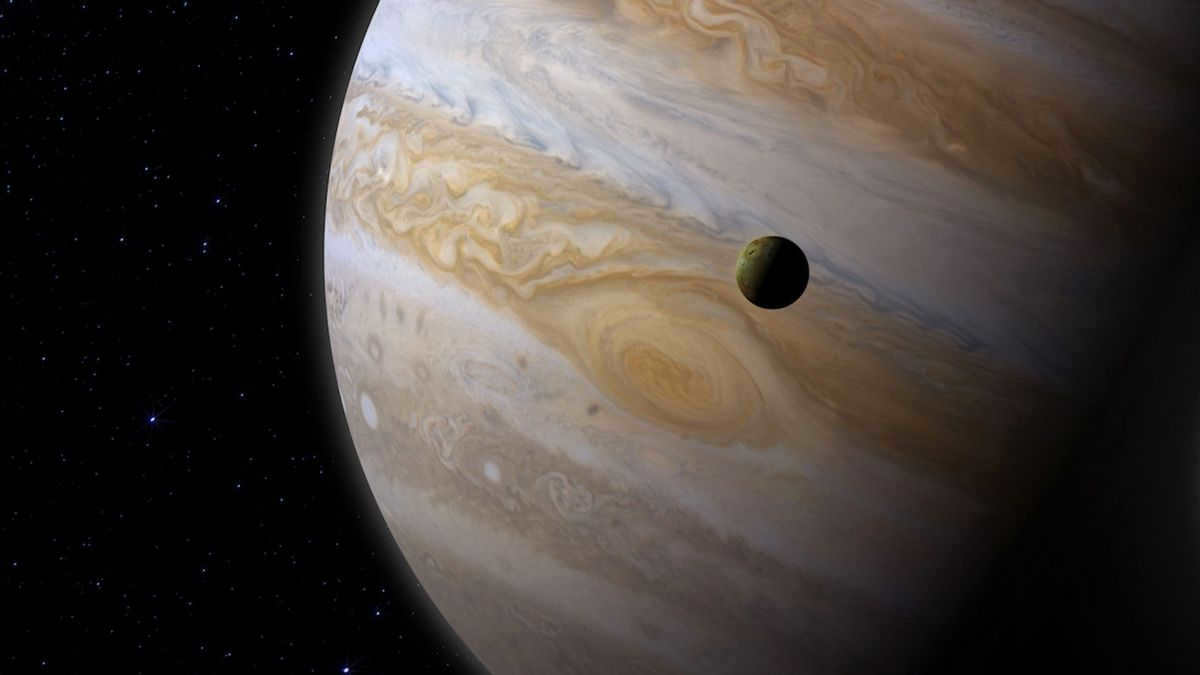
Jupiter and the Sun: Surprising Similarities
Despite not being a star, Jupiter shares some striking resemblances with the Sun. While Jupiter’s mass is not enough to ignite nuclear fusion and turn it into a star, it still holds a significant amount of mass. In fact, its mass is 2.5 times greater than the combined mass of all the other planets in our solar system. The main difference lies in their densities. Jupiter, being a gas giant, has a density of approximately 1.33 grams per cubic centimeter, much lower than Earth’s density of 5.51 grams per cubic centimeter. Comparatively, the Sun has a density of 1.41 grams per cubic centimeter, placing it closer to Jupiter in this aspect.
Another intriguing similarity between Jupiter and the Sun is their composition. The Sun is primarily composed of hydrogen, accounting for about 71 percent of its mass, with helium making up roughly 27 percent. The remaining portion consists of trace amounts of other elements. Jupiter follows a similar pattern, with hydrogen representing 73 percent of its mass and helium comprising 24 percent. This parallel in composition further highlights the resemblance between these two celestial objects.
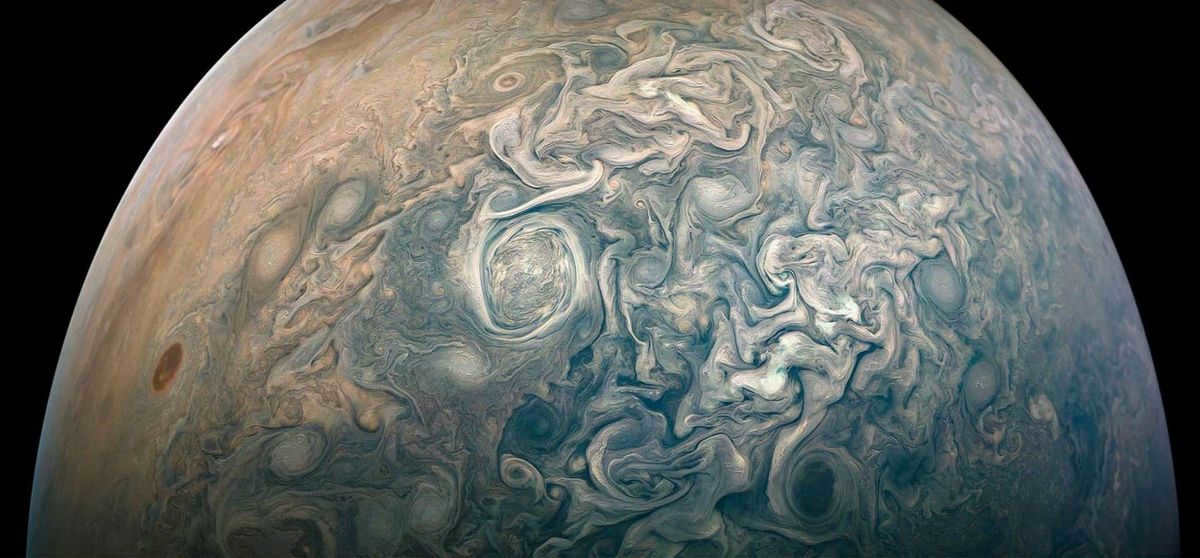
Why Jupiter is sometimes referred to as an unsuccessful star.
However, it is highly unlikely that Jupiter will ever come close to becoming a star.
You see, stars and planets are formed through completely different processes. Stars are formed when a dense mass of matter in an interstellar molecular cloud collapses under its own gravity, a process known as cloud collapse. As it collapses, it gathers more material from the cloud into its accretion disk.
As the mass and gravity of the young star increase, its core becomes more and more compressed, leading to an increase in temperature. Eventually, the core becomes so compressed and hot that it ignites and initiates thermonuclear fusion.
According to our understanding of star formation, when a star completes the process of accumulating material, there remains a significant amount of accretion disk. This is the material from which planets are formed.
Astronomers hypothesize that for gas giants like Jupiter, the formation process begins with small particles of icy rock and dust within the disk. As these fragments orbit the young star, they collide and stick together due to static electricity. Eventually, these growing clumps become large enough – approximately 10 times the mass of Earth – to gravitationally attract more and more gas from the surrounding disk.
From that point forward, Jupiter gradually increased in size until it reached its current mass, which is about 318 times that of Earth. Once it had consumed all available material within its vicinity – but still at a significant distance from the mass required for hydrogen synthesis – its growth ceased.
Therefore, Jupiter never came close to reaching the necessary mass to transform into a star. Jupiter’s composition is comparable to that of the Sun, not because it failed to become a star, but because it formed from the same molecular gas cloud from which the Sun originated.
Sources: Photo: NASA
We have found 15 explanations for the question Why is Jupiter referred to as an unsuccessful star? This should provide enough information to address your query.
In terms of mass, the Sun is composed of approximately 71% hydrogen and 27% helium, with trace amounts of other elements. Jupiter, on the other hand, consists of roughly 73% hydrogen and 24% helium. This is the reason why Jupiter is sometimes referred to as a failed star. Feb 13, 2021
Jupiter is approximately 318 times larger than the Earth in terms of mass and about 11.2 times larger in diameter. While it falls short of being a star, it is not far off. If Jupiter’s mass were to increase by 10 times, nuclear reactions would occur in its core, and it would transform into a self-luminous celestial body, much like a typical star.
Why is Jupiter sometimes referred to as a failed star? User Answers
Let’s explore the distinctions between a star and a planet, and whether Jupiter fits into either category. This is why Jupiter is occasionally labeled as a “failed star.”
Those who refer to Jupiter as a failed star typically point to its abundance of hydrogen and helium, characteristics shared by stars. However, there are still significant differences.
The individuals who refer to Jupiter as a failed star commonly point out its richness in hydrogen and helium, similar to stars. However, the likelihood of Jupiter becoming a star remains highly unlikely.
Why is Jupiter occasionally called a failed star? The answer lies in the fact that Jupiter is abundant in hydrogen and helium, similar to stars. Despite this, it is highly improbable for Jupiter to transform into a star.
Which planet is known as a failed star? Why didn’t this planet become a star? It is known as EBLM J0555-57Ab, a red dwarf located 600 meters away from us. This is the reason why Jupiter is sometimes referred to as a failed star.
Why is Jupiter unable to become a star?
Is it true that the planet Jupiter is considered a failed star? What is the name of the table that shows the relative positions of the planets and stars – referred to as (8 b.)?
Video answers explaining why Jupiter is known as an unmade star
Is it possible for Jupiter to transform into a star? What would occur if Jupiter were to become a star?
Can Jupiter undergo a transformation into a star? What would be the consequences if Jupiter were to become a star? What factors prevented Jupiter from becoming a star?
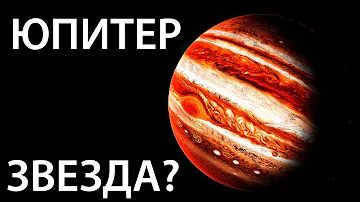
Common Misconceptions about the Planets: Lifeforms on Venus / Jupiter – A Failed Star / The Brightness of the Planets
Today, we will explore myths, misconceptions, and peculiar stories surrounding the planets in our solar system. If you have any questions, feel free to ask.
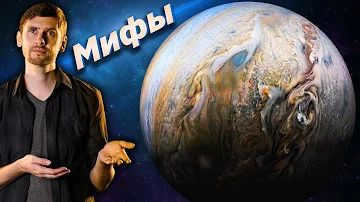
CosmOSHAR Episode 3: Why Jupiter did not succeed in becoming a star.
animation #cosmos #cosmic #cosmic #countryballs #solarsystem #tiktok #trend #trendvenus #star #earth #planetballs.Jupiter .
Why is Jupiter situated at such a considerable distance from the Sun?
Have you ever pondered the reason behind Jupiter’s substantial separation from the Sun? In spite of everything, when we observe other stellar systems, we .
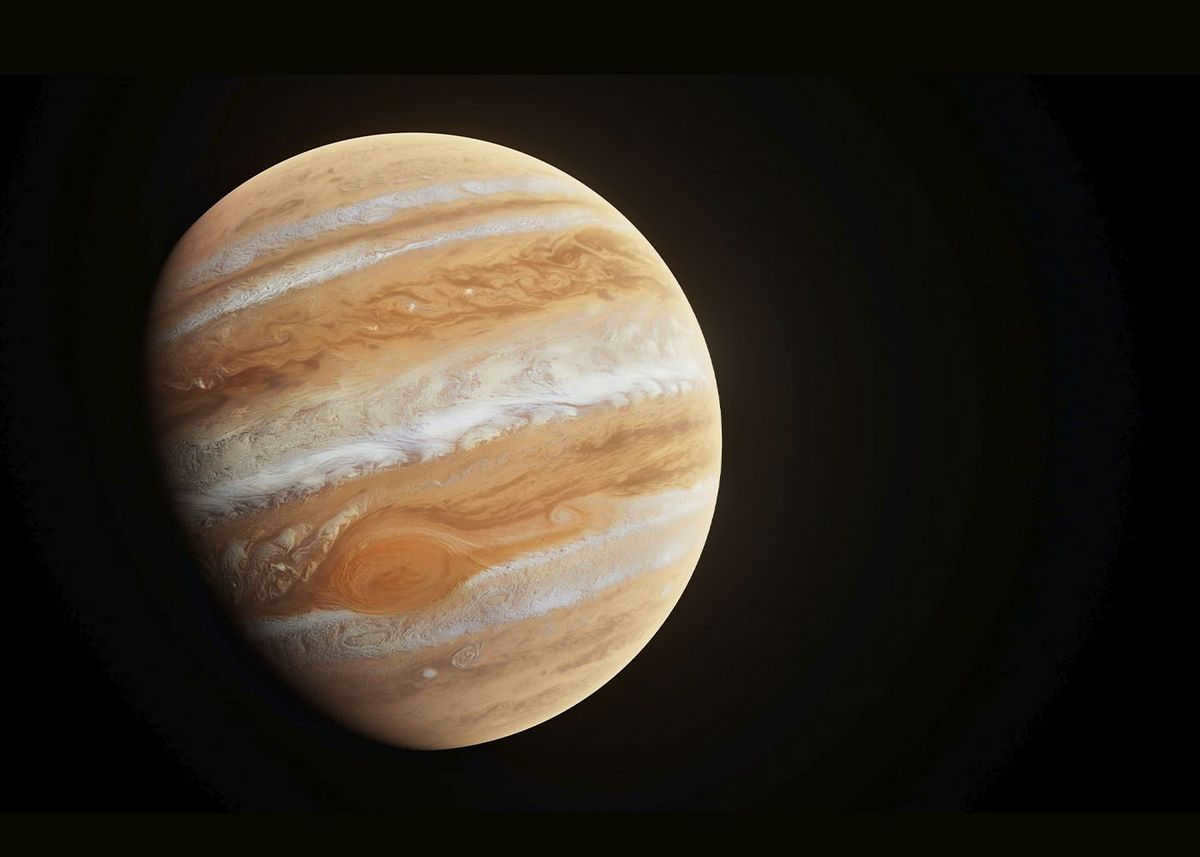
Jupiter can be considered as a star along with Saturn, Uranus, and Neptune because it is the largest of the four “gas giants” in our solar system. These gas giants are massive planets primarily made up of light elements, mainly in the form of gas. Jupiter is specifically classified as a gas giant. The composition of Jupiter consists of approximately 90 percent hydrogen atoms, while the remaining 10 percent is composed of helium and a small amount of trace elements that form molecules like water and ammonia.
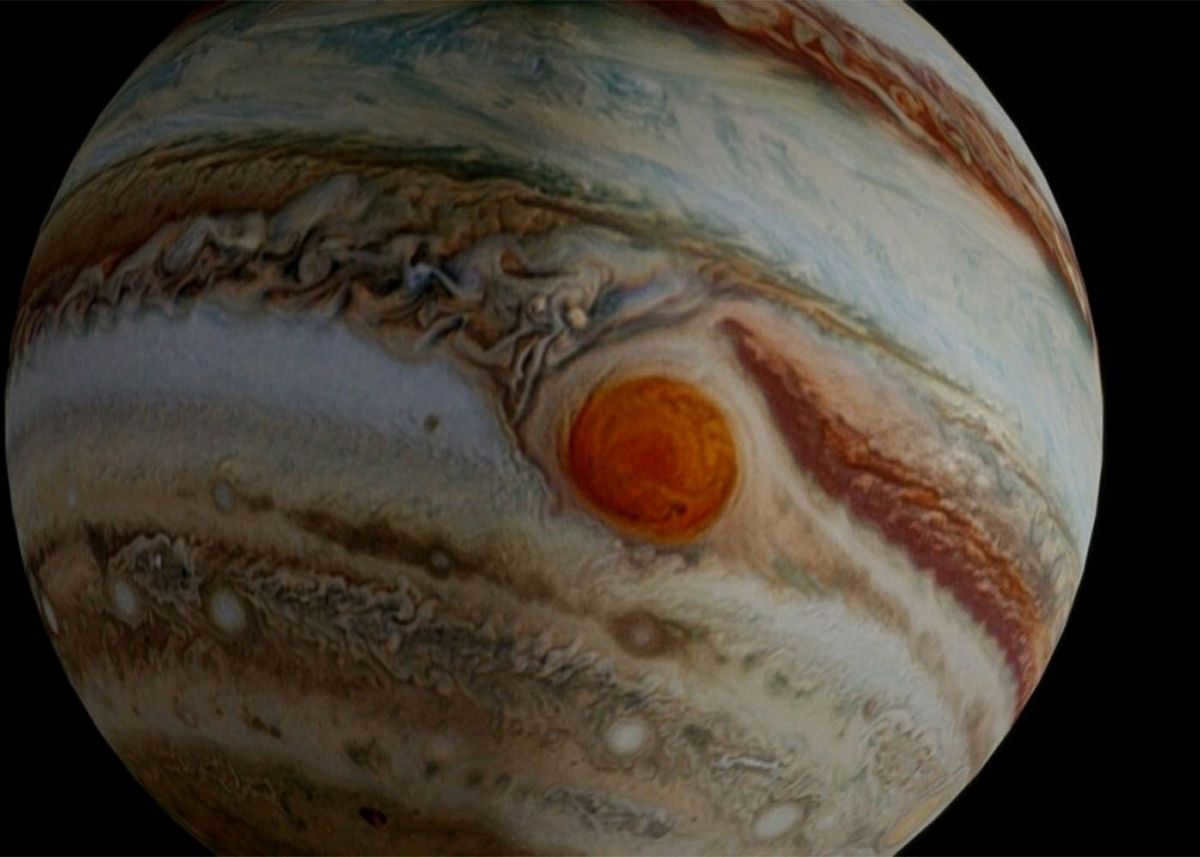
Jupiter holds the distinction of being the eldest planet in our solar system, as well as the most massive. Its mass is a whopping 2.5 times greater than the combined mass of all the other planets in our solar system.
All of this mass is compressed into a sphere that measures just under 140,000 kilometers in diameter, which is 11.2 times the radius of Earth. This immense size gives Jupiter an incredibly strong gravitational pull, which likely influenced the orbits of Earth and the neighboring planets. It takes this gas giant approximately 12 Earth years to complete one revolution around its orbit. However, its atmosphere spins at an astonishing rate, resulting in a day on Jupiter lasting a mere 9 hours and 55 minutes.
Jupiter is the only planet where the center of mass with the Sun is located outside the Sun, and it is approximately 7% of the solar radius away from the Sun.
2. The gas giant does not possess a solid surface
Jupiter’s composition consists of a mixture of gases blending seamlessly with its dense liquid hydrogen core. To simplify matters, astronomers employ the point where the pressure surpasses one bar, equivalent to the atmospheric pressure at sea level on Earth, as a reference point to distinguish between the atmosphere and the core. Below this demarcation, substances experience gradual compression, assuming peculiar states. Above it, layers of red and white clouds containing ammonia, ammonium hydrosulfide, and water ascend in warmer regions and descend in cooler bands, intermingling as they are buffeted by powerful winds during tumultuous storms.
3. The renowned Great Red Spot is decreasing in size
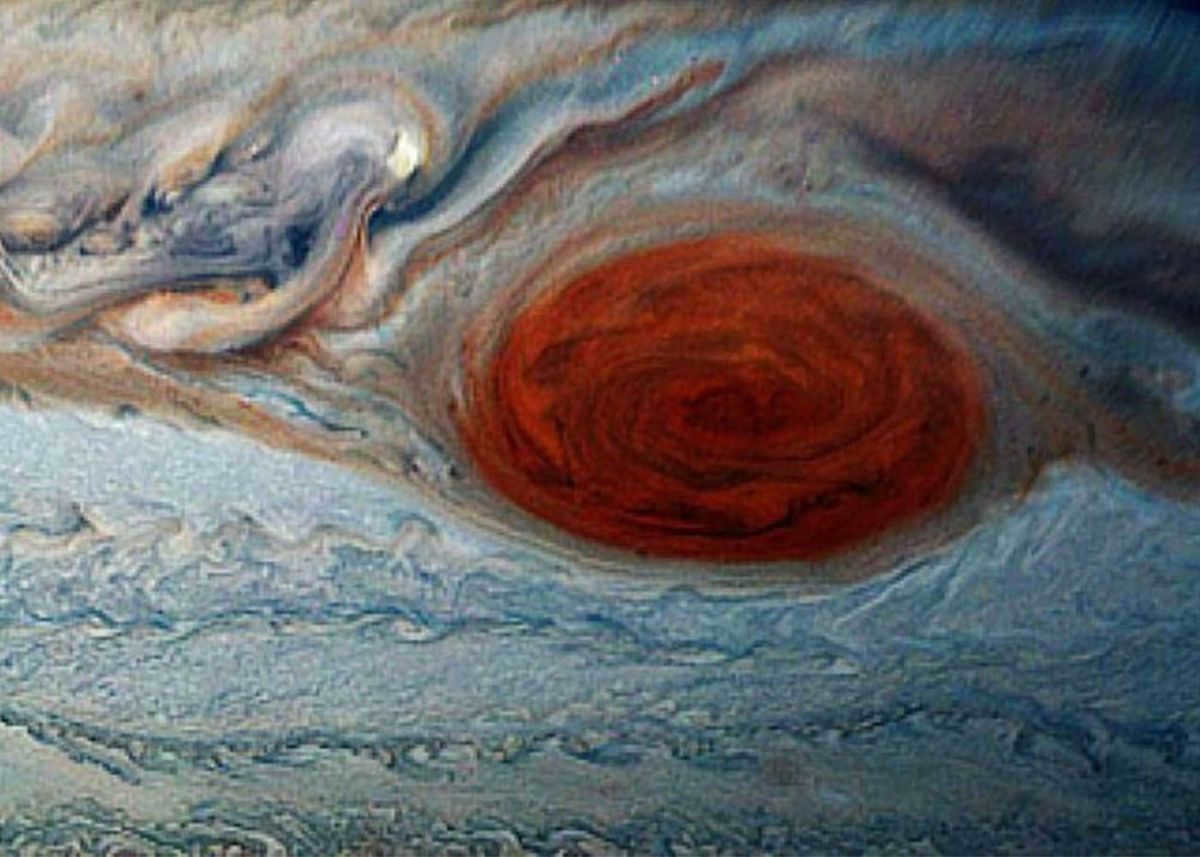
4. Jupiter emits a greater amount of energy than it receives
Due to its position five times further away from the Sun compared to Earth, Jupiter only receives a small percentage of sunlight. The majority of its energy, however, is generated internally as the immense gravitational forces compress its gases into a highly dense liquid state in the core, resulting in temperatures reaching tens of thousands of degrees Celsius and pressures of approximately one hundred million atmospheres. As a result, Jupiter emits approximately 1.6 times more energy than it receives from the Sun, leading to the formation of intense weather systems within its thick atmosphere.
Deep within this immensely hot and compact sphere, hydrogen is thought to undergo a transformation into a state that physicists are still grappling to comprehend – a metallic state. Despite its immense size, Jupiter is sometimes referred to as a “failed star” due to its inability to accumulate enough mass to initiate the fusion of hydrogen into helium. However, it is important to note that Jupiter is not truly a failed star; that distinction belongs to brown dwarfs, which occupy the space between gas giants and genuine stars. Even with its considerable mass, Jupiter falls short of the criteria to be classified as a brown dwarf. This has led astronomers to dub it a “failed star”. To achieve true stellar status, Jupiter would need to be 75 times more massive, whereas the smallest known red dwarf, for comparison, is only 30% larger in diameter.
6. Jupiter’s magnetic field is 20,000 times stronger than Earth’s
The intense magnetic field of Jupiter, which is 20,000 times stronger than Earth’s, may be attributed to the currents of charged hydrogen within the planet. This magnetic field extends beyond the diameter of the Sun and is responsible for accelerating electrons to incredibly high energies, resulting in some of the most dazzling auroras in our solar system.
7. Auroras are a constant presence at Jupiter’s poles
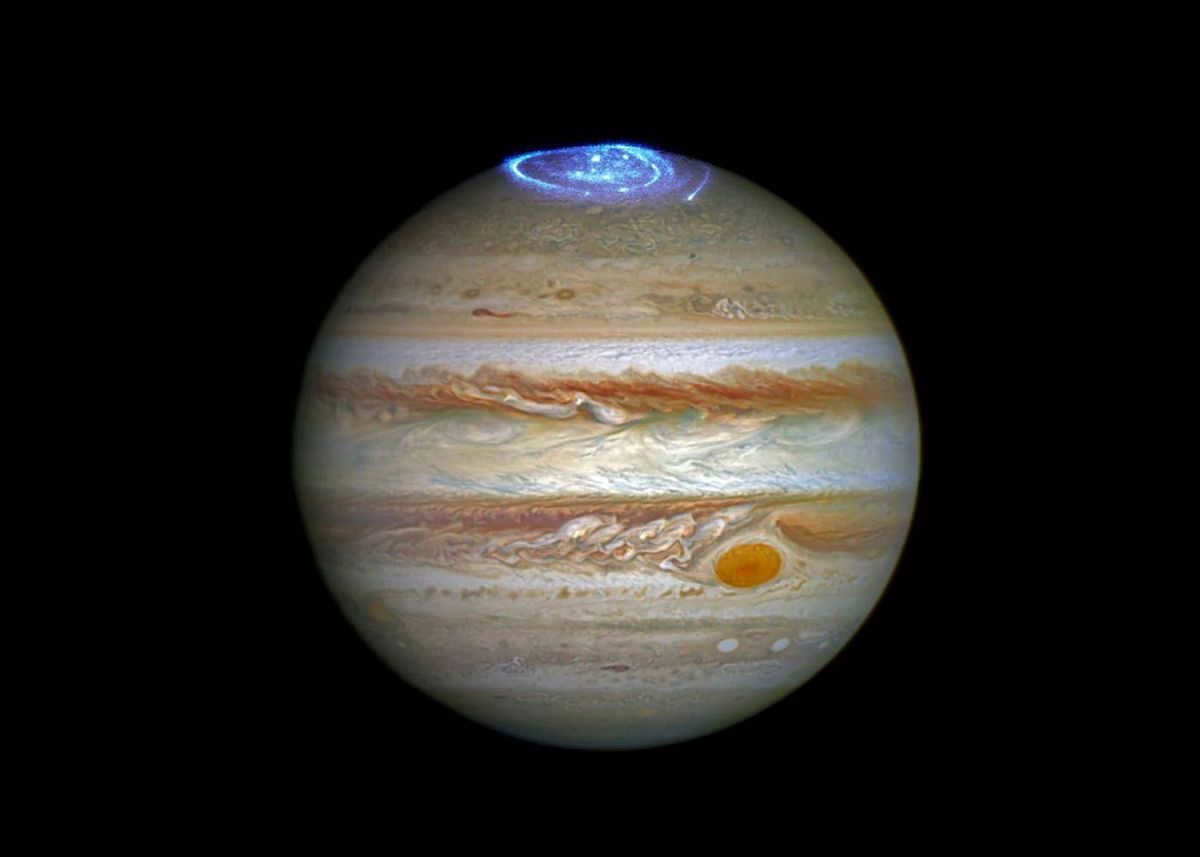
Astronomers have discovered that Jupiter can be considered a star due to the presence of constant auroras around its poles. However, these auroras cannot be seen by the naked eye as they emit light in wavelengths that are invisible to humans. Recent findings from the Juno probe and the XMM-Newton X-ray Space Observatory have revealed that these auroras are generated by oscillations along Jupiter’s magnetic field lines, which produce plasma waves. This process is similar to the mechanism behind the formation of auroras on Earth.
Unlike our planet Earth, Jupiter is home to a vast collection of various celestial bodies, thanks to its wide orbit and strong gravitational pull. Currently, there are 53 named objects that are officially recognized as being in Jupiter’s orbit. Out of these, four have been extensively studied since their movements were first documented by the famous Italian astronomer Galileo Galilei in the early 1600s. These four objects, namely Io, Europa, Ganymede, and Callisto, have provided valuable insights into the nature of Jupiter and its moons.
According to the latest data, Jupiter has a total of 79 natural satellites, each with its own unique characteristics. Some of the most distant satellites take approximately two Earth years to complete a single orbit around Jupiter. It is interesting to note that a group of nine recently discovered moons are moving in a retrograde orbit, which means they are traveling in a direction opposite to the rotation of Jupiter itself.
9. Jupiter’s faint rings
In 1979, dust swirling around Jupiter was observed by the Voyager 1 probe, creating a faint ring structure. These rings are very thin, with an optical thickness of approximately 10-6 and a particle albedo of only 1.5%. Despite their faintness, they can still be observed under certain conditions. When viewing Jupiter at phase angles close to 180 degrees (looking “against the light”), the brightness of the rings increases by a factor of around 100. Additionally, the dark night side of Jupiter does not provide any illumination. In total, Jupiter has three rings: a main ring, a spider web-like ring, and a halo.
10. There is a continuous collision happening with Jupiter
